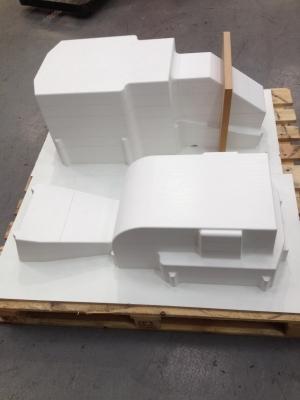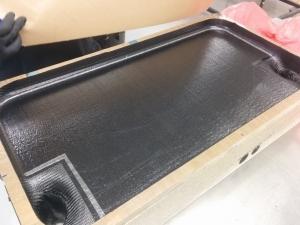



Radical Innovation for Composite Tooling
Specialist tooling company Compotool Ltd has in the last year brought to market a new tooling board product that represents a radical new approach to composite tooling.
“By focusing specifically on tooling technology we have dedicated all our resources to solving some of the perennial issues with composite tooling. We are pleased to have come to a refined product range that simply does its job extremely well. Rather than representing an incremental improvement on products already available on the market, what we have created can be considered a significant break through, ” says Managing Director Paul Hackett.
The Compotool system includes the tooling board, adhesive and surface sealer and is therefore perfect as a high accuracy pattern system or for rapid prototyping and short run direct tooling. CT850 is a high performance tooling board with a coefficient of thermal expansion equal to carbon and has temperature capability of up to 850°C. It has very low thermal conductivity so all the heat applied from the autoclave goes into the laminated part rather than the tooling board, giving an improved surface finish, significantly reducing autoclave time and also allowing faster ramp rates. Its machinability is also a clear advantage, with wear on cutting tools being equal to that of machining wood or MDF.
“The tooling board is a natural product, totally inert, no VOC’s,” confirms Paul Hackett, “ but its’ what it can do for your production processes that gets most of our clients excited”. The board is a poor conductor of heat unlike epoxy tooling blocks and therefore can be cycled through the thermal curing process very quickly. It retains its dimensions even through rapid cure and cooling, so it gives great reductions in autoclave time saving money and allowing for more rapid development of parts. With its extreme temperature capability of 850°C, either medium or high temperature pre--‐pregs can be used enabling a full cure at high temperature to be achieved in the tool in one process, thus avoiding the need for a subsequent post cure. “You can start to think of your tool development phase in terms of hours rather than in days and weeks” explains Paul Hackett, “that’s radical!”
An additional benefit is that the CT850 can be used as a drilling or machining jig after cure as the mould or part will still fit perfectly. Potential users of the board will also be pleased with the environmental credentials of this product. It is totally natural, which means that when the tool is no longer needed it can be ground up and put back into the earth. Radical and practical, a winning combination.



